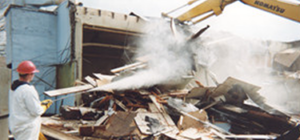How to Reduce Your Exposure to PFAS: Practical Tips
Given the growing concerns about the health risks associated with PFAS exposure, you may be wondering what you can do to minimize your contact with these “forever chemicals.” While it may not be possible to completely avoid PFAS, there are several practical steps you can take to reduce your exposure.
1. Check Your Water
If you live in an area where PFAS contamination is a known issue, consider testing your water. Many home water filters, particularly those with activated carbon or reverse osmosis systems, can effectively remove PFAS from drinking water.
2. Avoid Non-Stick Cookware
Non-stick pans often contain PFAS-based coatings. Consider switching to safer alternatives, such as stainless steel or cast iron cookware, which don’t release harmful chemicals during cooking.
3. Be Careful with Food Packaging
Certain food packaging materials, especially those that are grease-resistant, may contain PFAS. Try to minimize consumption of fast food or takeout that comes in coated packaging. Opt for fresh foods and store them in glass or stainless steel containers.
4. Choose PFAS-Free Products
More and more companies are labeling their products as PFAS-free, from clothing to cosmetics. When shopping, look for labels that indicate the absence of PFAS, especially when buying water-resistant items, makeup, or cleaning products.
5. Check for PFAS in Firefighting Foam
If you are a firefighter or live in an area where firefighting foams are used, check whether the foams contain PFAS. Many fire departments are switching to PFAS-free alternatives, but older stocks may still contain the chemicals.
Reducing your exposure to PFAS doesn’t require major lifestyle changes—small adjustments can make a big difference. Being aware of where PFAS are commonly found and taking steps to avoid them will help protect your health in the long run.













